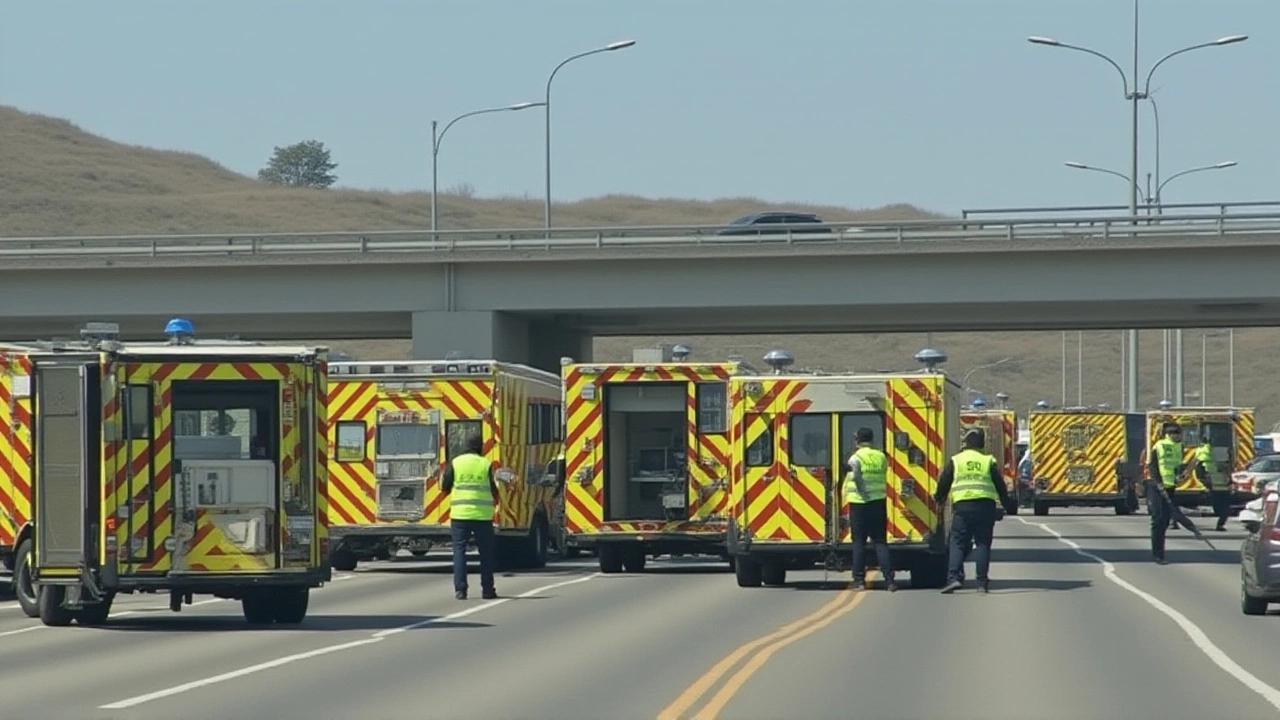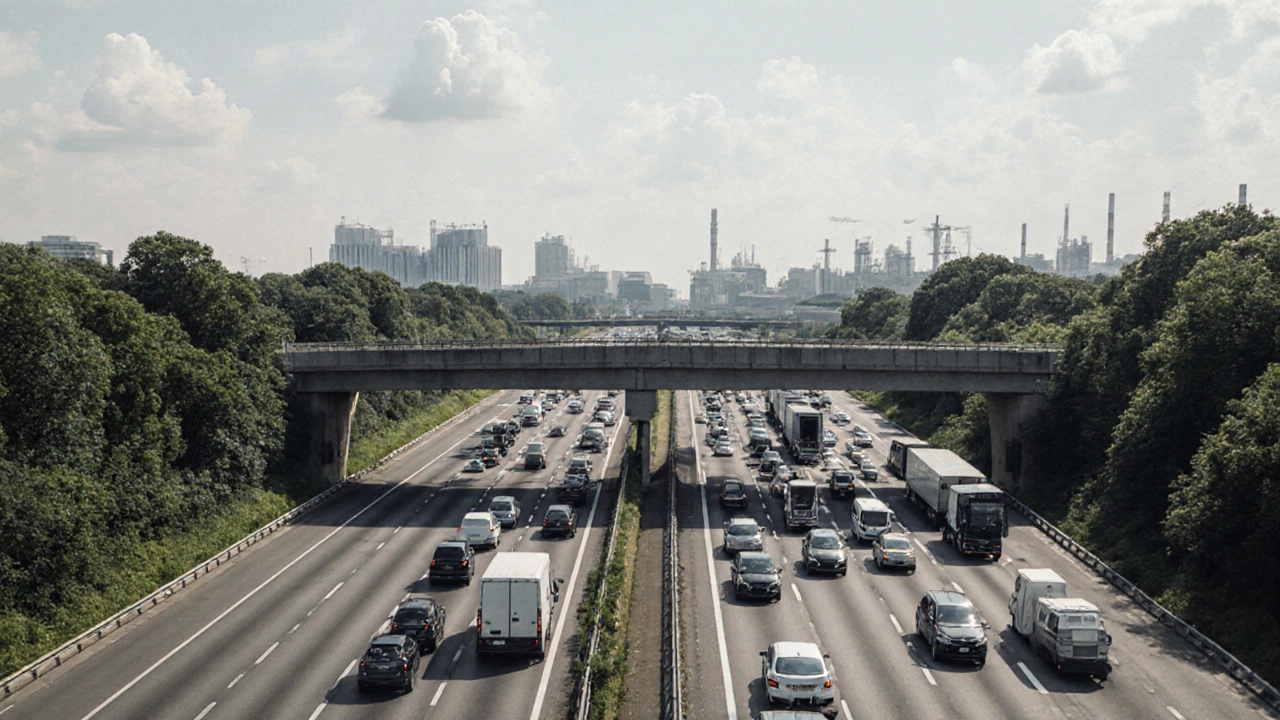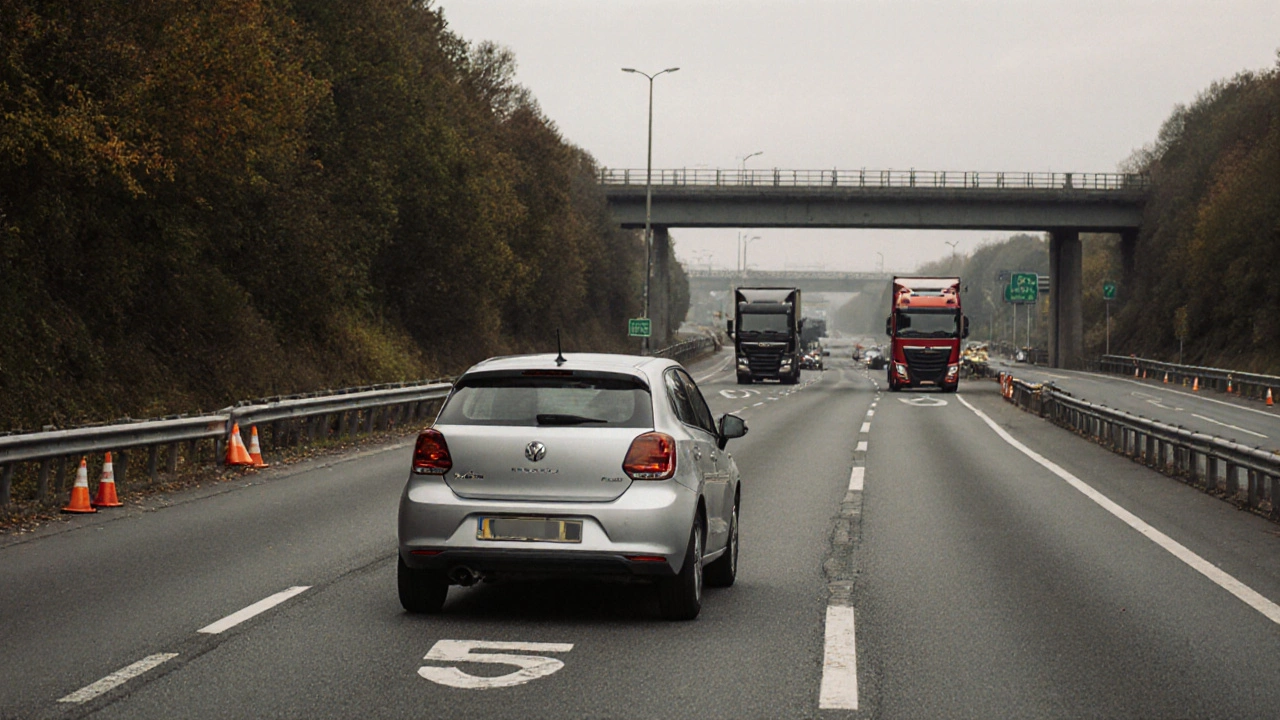When Avon and Somerset Police received an emergency call about a serious collision on the M5 motorway on Thursday, October 3, 2024, they knew the incident would ripple across the region. The crash – a motorbike slamming into a van around 1:30 pm on the southbound carriageway between Weston‑super‑Mare and Burnham‑on‑Sea – triggered a multi‑agency response that included an air ambulance, road closures and a wave of driver frustration.
What happened on the M5
The collision involved a single‑track motorcycle and a white panel van traveling southbound. According to on‑scene officers, the motorbike appeared to lose traction on a wet patch of the carriageway, crossing into the path of the van. The impact was described as "serious" by a police spokesperson, who declined to name the rider while medical details were still being confirmed. The rider was quickly extracted by emergency crews and air‑lifted to a nearby hospital for treatment.
Investigators later noted that the van driver suffered minor injuries and was treated at the scene before being allowed to leave. Both vehicles were removed from the road by recovery teams, a process that took over an hour and required the closure of both carriageways to ensure safety.
Emergency response and air ambulance deployment
Within minutes of the 911 call, Bristol Air Ambulance dispatched a helicopter from its base at Filton. The crew – a pilot, a paramedic and a critical care doctor – landed on the hard shoulder of the M5, a maneuver that’s rehearsed but rarely needed on a busy motorway.
"We set up a rapid landing zone, stabilised the rider and transferred him to the helicopter in under ten minutes," said Senior Paramedic Lucy Hart, who was on the crew. "Time is everything in these cases; getting him airborne quickly can make the difference between life and death." The aircraft then flew the rider to Southmead Hospital, where surgeons began emergency procedures.
Meanwhile, additional police units, fire‑fighters and a National Highways traffic team converged on the scene. The coordinated effort allowed the southbound lanes to be cleared while the northbound side remained open for traffic heading toward the Midlands.
Traffic management and driver impact
National Highways activated its emergency traffic management protocol at 1:45 pm. Both carriageways were initially closed to allow the air ambulance to land and to give recovery crews safe access. By 2:10 pm, northbound traffic resumed, but the southbound lane between Junction 21 (near Weston‑super‑Mare) and Junction 22 (near Burnham‑on‑Sea) stayed shut.
The closure created a snarled backup that stretched for over six miles. Motorists reported waiting up to 90 minutes, with some diverting onto the A370 and A38 routes, which themselves became congested. National Highways deployed traffic officers with portable signs, directing drivers using the solid square diversion symbol for southbound traffic and a solid triangle for the northbound flow.
- Peak delay: ~90 minutes
- Closure length: 2.3 km (J21‑J22)
- Alternative routes: A370, A38, local roads
- First reopening: northbound at 2:10 pm
Drivers were urged via the Highways England app and local radio to allow extra travel time and to consider postponing non‑essential journeys. The incident highlighted how a single crash can cripple a major arterial route, especially during peak travel windows.

Investigation and police appeal
Following the crash, Avon and Somerset Police opened a formal investigation into the circumstances leading up to the collision. Inspectors are reviewing dash‑cam footage, CCTV from nearby service stations and statements from any witnesses who might have seen the motorbike lose control.
"We are appealing to anyone who was on the M5 that afternoon to get in touch with us, especially if you have dash‑cam recordings," said Inspector Claire Hughes, the officer coordinating the enquiry. "Even a few seconds of footage can help us reconstruct the events and determine whether road conditions, speed or something else contributed to the crash."
The police have set up a dedicated phone line (01234 567 890) and an email address ([email protected]) for tips. They stress that anonymity is respected, and that all information will be handled sensitively.
Wider implications for road safety
Motorcyclists are disproportionately affected in high‑speed collisions, a fact underscored by this incident. According to the Department for Transport, motorcyclists account for 18% of all road deaths on motorways, despite representing less than 2% of total traffic. The M5 crash adds another data point to a growing call for better protective measures, such as enhanced road surface drainage and more visible lane markings.
Transport officials are reviewing the weather data from that afternoon – a passing shower left a thin film of water on the carriageway. While the pavement was not reported as hazardous, the combination of wet conditions and high speeds can quickly turn a routine ride into a nightmare.
Advocacy groups like the Motorcycle Action Group (MAG) are urging local councils to fund additional safety campaigns aimed at both riders and drivers, emphasizing the need for adequate following distances and awareness of vulnerable road users.

Looking ahead
The southbound section between Junction 21 and Junction 22 is slated to reopen fully by early tomorrow morning, after thorough cleaning and a safety inspection by National Highways engineers. In the meantime, the police investigation remains ongoing, with a preliminary report expected within two weeks.
For commuters, the lesson is clear: always allow extra time on motorway journeys, especially during unpredictable weather. For policymakers, the crash reinforces the urgency of investing in infrastructure upgrades that protect the most at‑risk road users.
Frequently Asked Questions
How does this crash affect motorists traveling southbound on the M5?
Southbound drivers faced a full closure between Junction 21 and Junction 22, resulting in delays of up to 90 minutes. Alternative routes such as the A370 and A38 became heavily congested, and travellers were advised to allow extra time or postpone non‑essential trips until the lane reopens.
What role did the air ambulance play in the emergency response?
The Bristol Air Ambulance landed on the motorway shoulder, stabilised the injured rider and flew him to Southmead Hospital within minutes. Their rapid intervention is credited with improving the rider’s chances of survival, illustrating the importance of air‑medical services on major roadways.
Why is Avon and Somerset Police investigating this incident?
Police are seeking to determine the exact cause of the collision – whether it involved speed, road conditions, mechanical failure or driver error. Dash‑cam footage, witness statements and vehicle data are being examined to build a comprehensive picture for potential safety recommendations.
What safety measures could prevent similar crashes on motorways?
Improved drainage to reduce wet spots, higher‑visibility lane markings, and targeted awareness campaigns for both motorcyclists and car drivers are among the measures experts recommend. Additionally, enforcing speed limits during adverse weather can give riders more reaction time.
When is the southbound M5 expected to reopen fully?
National Highways officials said that after thorough cleaning and safety checks, the closed segment should be open by early tomorrow morning, provided no further incidents occur.
